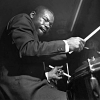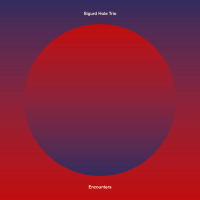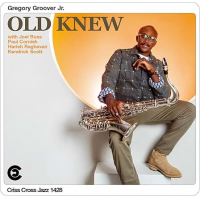Home » Jazz Articles » Album Review » Charles Mingus: The Lost Album from Ronnie Scott's
Charles Mingus: The Lost Album from Ronnie Scott's
Mingus' 1972 European tour was a comeback of sorts for the bandleader. He had returned from a self-imposed isolation, a mental holiday from the music industry, and this tour, plus a 1971 Guggenheim Award, acted as a renaissance for the great man. Gone was his classic 1964 quintet of Eric Dolphy, Clifford Jordan, Johnny Coles, Jaki Byard, and Dannie Richmond. During Mingus' hiatus, Richmond had left to join a pop band; however, he would return to the bandleader's fold in latter years. The drummer was replaced by Detroit's Roy Brooks, who was a complement to alto saxophonist Charles McPherson who spent nearly 15 years in Mingus' employ, remarkable for his resilience, since the bassist, although a genius, was a difficult taskmaster. The quintet also included tenor saxophonist Bobby Jones, a former member of Woody Herman's big band, and pianist John Foster. Both musicians are a bit of a mystery and, perhaps if these recordings had been released back in the day, they might have featured more in other settings. For the first time, the crowd in London heard the 19 year old sensation Jon Faddis, who Mingus introduced as an 11 year old. The Dizzy Gillespie protégée, had chops to burn and, as quoted in the liner notes, Mingus remarked, "The solos are yours, but the tunes are mine." Maybe that is what makes live recordings of his ensembles worthy. The majority of the compositions heard are familiar to listeners, but Mingus untethers his musicians to great effect.
Mingus lead his ensemble through lengthy renditions (over 30 minutes) of "Orange Was The Color Of Her Dress, Then Silk Blues" "Mind-Readers' Convention In Milano (aka Number 29)," and "Fables of Faubus," where he channels the music and the musicians with his musical inside jokes. His "Noddin' Ya Head Blues," a rarely-recorded composition, opens with a gutbucket bass solo before Foster does his best Eddie "Cleanhead" Vinson vocal imitation and Brooks takes to his musical saw for a solo. Elsewhere, "Pops (aka When the Saints Go Marching In)" is a throwback to Louis Armstrong's New Orleans with Foster's vocals, Mingus' slap-bass, and Jones' switching to clarinet to bring that second line parade feel to London. "The Man Who Never Sleeps" is a vehicle for the acrobatic trumpet of Faddis, who displays his high-wire act throughout. The music is Mingus and it is fabulous stuff.
Track Listing
CD 1
Introduction: Orange Was The Color Of Her Dress, Then Silk Blues; Noddin’ Ya Head Blues.
CD 2
Mind-Readers’ Convention In Milano (aka Number 29); Ko Ko (Theme).
CD 3
Fables of Faubus; Pops (aka When the Saints Go Marching In); The Man Who Never Sleeps; Air Mail Special.
Personnel
Charles Mingus
bass, acousticCharles McPherson
saxophone, altoBobby Jones
saxophone, tenorJon Faddis
trumpetJohn Foster
pianoRoy Brooks
drumsAdditional Instrumentation
Bobby Jones: clarinet. Roy Brooks: musical saw.
Album information
Title: The Lost Album from Ronnie Scott's | Year Released: 2022 | Record Label: Resonance Records
Tags
PREVIOUS / NEXT
Support All About Jazz
 All About Jazz has been a pillar of jazz since 1995, championing it as an art form and, more importantly, supporting the musicians who make it. Our enduring commitment has made "AAJ" one of the most culturally important websites of its kind, read by hundreds of thousands of fans, musicians and industry figures every month.
All About Jazz has been a pillar of jazz since 1995, championing it as an art form and, more importantly, supporting the musicians who make it. Our enduring commitment has made "AAJ" one of the most culturally important websites of its kind, read by hundreds of thousands of fans, musicians and industry figures every month.


























